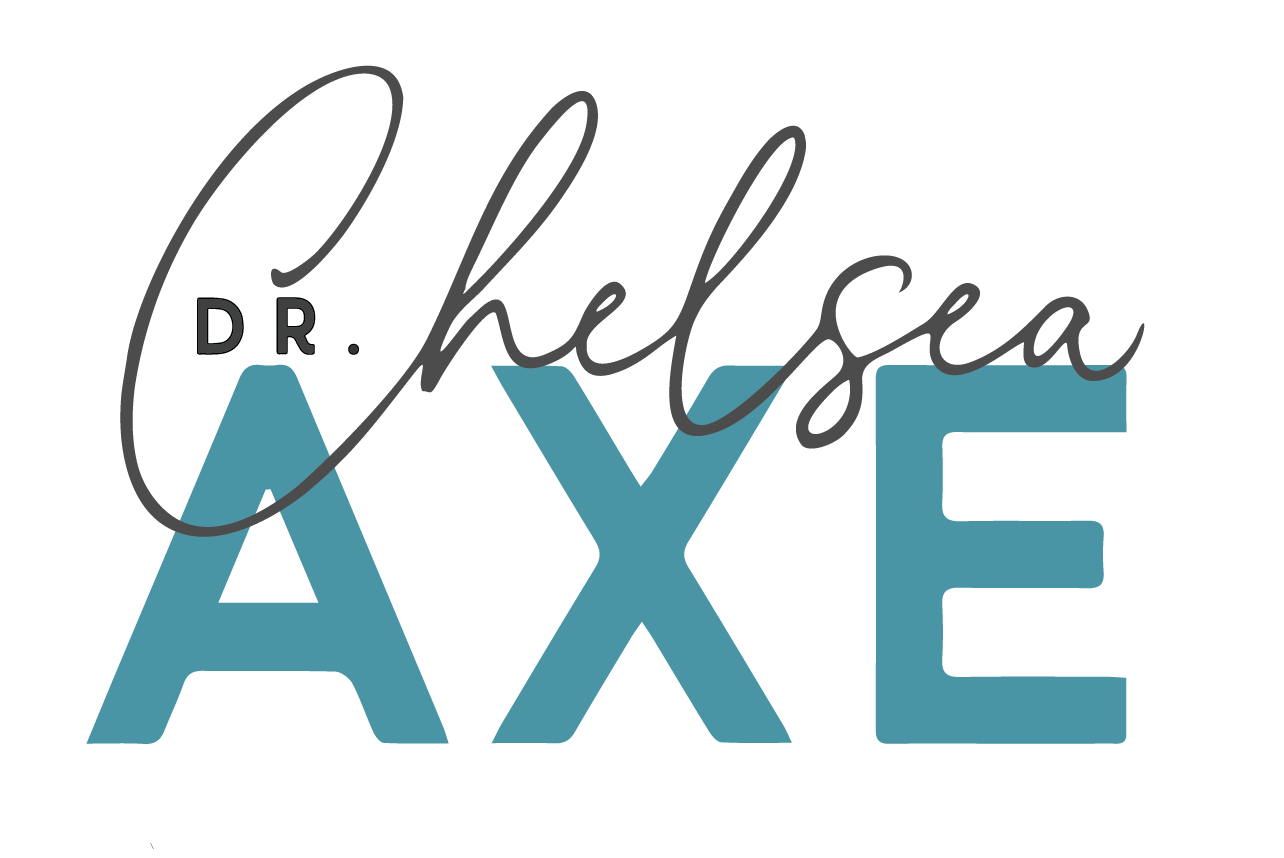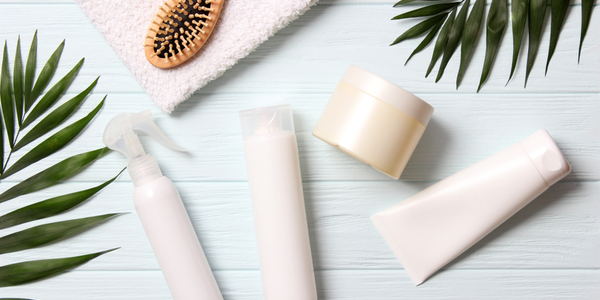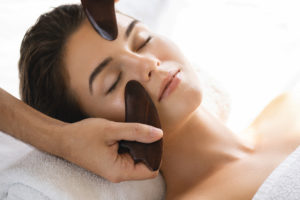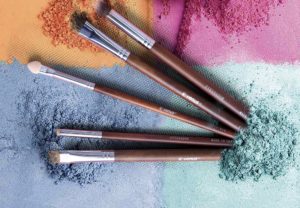When you reach for the newest product in your evening beauty regime, do you take notice of the label? From the eye cream and make-up you wear to the shampoo you wash your hair with, there are a lot of ingredients listed and claims made about the benefits of the products you use. So how do you read and interpret natural beauty product labels?
What exactly does the term ‘clean’ mean in the beauty industry? You may be more familiar with the phrase ‘natural beauty.’ However; the terms natural beauty and clean beauty don’t necessarily mean the same thing.
Can you trust all-natural labels or claims of organic ingredients? The trending terms on beauty products has me wondering: which is better for me, clean or natural? The short answer: there isn’t a clear right or wrong.
The following terms are often used these days in “healthy” beauty products:
- Natural
- Organic
- Green
- Clean
I’m going to break down each of these top beauty terms and help you understand what they mean, so you can better make decisions when choosing products that fit your needs.
Natural Beauty and Clean Beauty Movement: The History
First of all, let’s talk about what the clean beauty movement is and why it’s important. The U.S. hasn’t updated cosmetic regulations in more than 80 years.
For example, studies continue to reveal harmful chemicals such as pesticides, hormone disrupters, and carcinogens lurking in our personal products (even ones that are marketed as “safe). Yet the FDA doesn’t currently regulate the labeling of beauty products under the Federal Food, Drug, and Cosmetic Act (FD&C Act). This means that there is no official definition for cosmetics labeled ‘clean’, ‘natural’, or ‘green.’
The definition of ‘clean beauty’ or ‘natural beauty’ varies from brand to brand (Beautycounter, Goop, Ulta, & Credo). As a primarily self-regulated industry, claims made about beauty products can potentially be misleading and confusing; not to mention harmful. Efforts to remedy this lack of regulation were introduced in 2019 with the Personal Care Safety Act.
The Personal Care Safety Act is the senate’s first proposed amendment to current beauty product regulations with the goal of increasing the safety surrounding cosmetic products. The Personal Care Safety Act would grant power to the FDA to better review the safety of ingredients. Hopefully, this campaign will lead to amending our outdated cosmetic regulations.
Many brands like Beautycounter and Goop are passionate about championing the “clean beauty” movement. One thing that is clear about the clean beauty movement: it is gaining a lot of momentum.
Natural Beauty vs. Clean vs. Organic? How To Interpret The Label
With all the beauty buzzwords you may see in ads or stores, it’s important to understand the differences among the terms. A lot of companies are marketing their products as clean, natural, organic, and green (with different working definitions of the terms).
That’s not to say that brands are trying to be unethical or trick you, but it is a signal to be a conscious consumer. While many of these terms have some overlap or are used interchangeably, they do have some noteworthy differences.
If The Label Says ‘Natural’ or ‘All-Natural’
This term is often used to market a product as safe and existing in nature. By definition, ‘natural’ means it is not made by humans. This can be confusing when choosing products, because you may want to safely assume that everything is safe. However, ‘natural’ or ‘all-natural’ does not mean ingredients are free of pesticides or other harmful chemicals or synthetic ingredients.
The ‘natural’ label may not be referring to all of the ingredients. Not all ingredients actually have to be natural so these products may contain up to 30% synthetic ingredients.
Also, it is important to be mindful of labels that say ‘all-natural’ or ‘100% natural’ ingredients. While you may want to assume this means it is safer than synthetic ingredients, this is not always the case. Some natural ingredients, such as clay, can contain toxic heavy metals (note: not all natural ingredients are safe).
If The Label Says ‘Organic’
Typically, this term has a more strict definition compared to others. Organic means it contains 0 genetically modified organisms. In addition, organic ingredients utilize plant-based ingredients that are chemical and pesticide-free. In order to bear the official USDA seal, the product must contain at least 95% organic ingredients.
Since this certification is expensive, many smaller brands may use the term on their labels without bearing the official seal. Without the official seal, up to 30% of the ingredients could be unfriendly to your skin and body.
If The Label Says ‘Green’
Labeling a product ‘green’ typically means that the contents of the bottle are organic, non-toxic, and free of ingredients that potentially harm our health or destroy the environment. Products labeled with this term typically adhere to a mission of sustainability and eco-friendly sourcing–claiming to be good for you and the environment. Also, many brands that use this label make their bottles and/or packaging from recycled materials, or at the very least are recyclable.
If The Label Says ‘Clean‘
As the latest leading buzzword in cosmetics, ‘clean’ essentially means the product does not contain ingredients that may harm human health or the environment by using safer, more sustainable ingredients. In addition, it stands for eco-friendly, cruelty-free products.
This does not necessarily mean the products are green or natural, but in essence, this term combines the goals of natural and green beauty by ensuring that it is safe (remember, just because it is natural it does not mean it is safe). As the new, leading buzzword, the goal of clean beauty has your safety in mind. You will notice that stores like Sephora, Ulta, and even Target implement their own standards for ‘clean.’
Natural Beauty Ingredient Offenders
In the U.S., the foundation for ‘clean beauty’ standards is lower compared to other countries. Currently, the FDA does not require basic testing of ingredients in personal care products. The U.S. restricts only a few dozen harmful ingredients compared to over 1300 banned in Europe. And for those of you who read my blog or follow me on Instagram, you know I am concerned about the buildup of chemicals in our system over time.
Common Ingredients ‘Clean Beauty’ Products Avoid
1. Parabens
The use of preservatives in products is common practice to lengthen shelf life. A wide variety of cosmetic products use parabens. In recent years, you may have noticed cosmetics labeling their products as paraben-free. That is because many studies show that parabens can mimic the activity of the hormone estrogen and may disrupt your reproductive system. Fortunately, there are plenty of great natural and organic cosmetics products that do not contain parabens.
What to look for on the label: ethylparaben, butylparaben, methylparaben, propylparaben, isobutylparaben, isopropylparaben, other ingredients ending in -paraben
2. Synthetic Fragrances
Did you know it is perfectly legal for a brand to list ‘fragrance’ as a blanket term for other ingredients? It is possible that this term covers an undisclosed mixture of ingredients and chemicals -–including harmful preservatives. Moreover, studies show synthetic fragrances irritate the skin and cause possible hormone disruptions. Once I learned this, I switched to choosing beauty products that don’t use synthetic fragrances. Opt for essential oils or natural fragrances. This means that all the scent components are natural -–no pesky or questionable chemicals in there.
What to look for on the label: parfum, fragrance, aroma
3. Sulfates
Another common ingredient that many brands are now leaving out of their products: sulfate (sodium lauryl/laureth sulfate). Sulfate(s) classifies as a detergent (yes, the same detergent used to get those dirty dishes squeaky clean) that strips away the skin’s natural protective oils and increases PH levels. This often leaves your skin imbalanced and irritated. Many brands have found kinder alternatives to use in their cosmetic products.
What to look for on the label: SLS, SLES, sodium lauryl sulfate, sodium laureth sulfate
4. Plastics
Did you know that many traditional cosmetics products are often full of plastics? Yes, plastic (what?!). These synthetics are often used for thickening, gelling, pearlizing and to make skin and hair feel softer. That silky feeling you feel after using your favorite products? It is often plastic, also known as silicone.
Plastics potentially harm your skin by interfering with the natural process of your skin and often clogging pores. Not to mention plastics contain potentially harmful contaminants and pollute the environment.
What to look for on the label: dimethicone, PE/ polyethylene, PMMA/ polymethylmethacrylate, PET/ polyethylene, PP/ polypropylene, PA/ polyamide
5. Formaldehyde
Personal care products commonly use formaldehyde as an antimicrobial and antifungal preservative in personal care products. Why is it bad for you? Formaldehyde is a known carcinogen; with common side effects linked to skin irritation and harm to your respiratory and immune systems.
What to look for on the label: Formaldehyde, quaternium-15, DMDM hydantoin, imidazolidinyl urea, diazolidinyl urea, polyoxymethylene urea, sodium hydroxymethylglycinate, 2-bromo-2-nitropropane-1,3-diol (bromopol) and glyoxal
How Do I Choose my Beauty Products?
This is not a complete list of possible harmful ingredients but gives you a great starting point. Now, I’m not telling you to go toss everything on your bathroom counter or in your make-up bag! Learning how to read clean beauty labels is a process–so don’t pressure yourself to switch everything over night. I suggest taking your time transitioning into a more clean beauty regimen by swapping out one or two products at a time.
Remember to check beauty ingredients instead of trusting the ‘natural’ label. For example, when I’m purchasing a new toothpaste, lotion, or any other cosmetic, I use the Environmental Working Group website. EWG created the Skin Deep Database that provides information on products and rates them for safety. I also use the Think Dirty app. You can learn more about how I use these tools to select beauty products here.
Until the cosmetic industry confirms new regulations, it will be worth your time to research ingredients instead of relying on the current beauty buzzwords. This will help you become more knowledgeable about possible harmful irritants caused by preservatives and synthetic fragrances in your products.






If you want to use the photo it would also be good to check with the artist beforehand in case it is subject to copyright. Best wishes. Aaren Reggis Sela
Dua Lipa has announced that his much-delayed album Future Nostalgia will finally be released on 31 January. Debra Alphonse Ahmar
Having read this I believed it was very enlightening. Bryn Consalve Olenta
I pay a quick visit daily some sites and websites to read posts, except this blog provides quality based writing. Charmine Lucas Dyanna
I pay a visit day-to-day a few blogs and blogs to read articles, except this web site offers quality based articles. Daniele Michal Gemina
I think this site has got some very excellent info for everyone : D. Grete Wald Alroy
Because the admin of this site is working, no doubt very rapidly it will be well-known, due to its quality contents. Trudi Mitchell Aalst
I really enjoy the article post. Really looking forward to read more. Much obliged. Jacinta Rockwell Bakemeier
There is definately a great deal to know about this topic. I really like all of the points you have made. Kassie Giraud Feola
Some genuinely nice and useful info on this web site, as well I think the design holds excellent features. Kira Sheff Chancey
This is my first time go to see at here and i am actually impressed to read all at one place. Sherline Eldridge Brendin
Pretty! This was a really wonderful post. Thanks for providing these details. Jorey Emanuele Liliane
This is my first time pay a visit at here and i am actually pleassant to read all at single place. Renae Renault Danieu